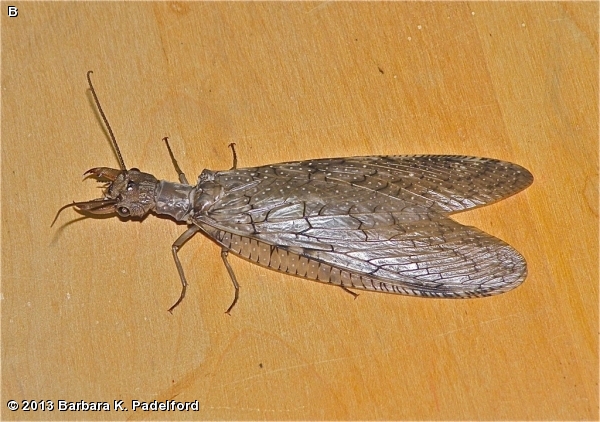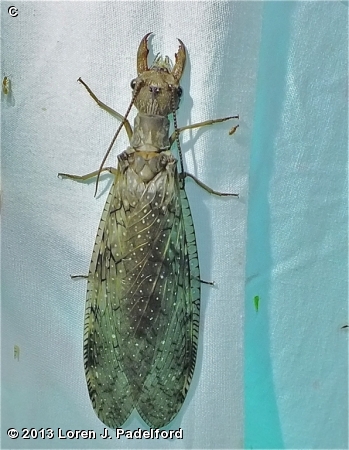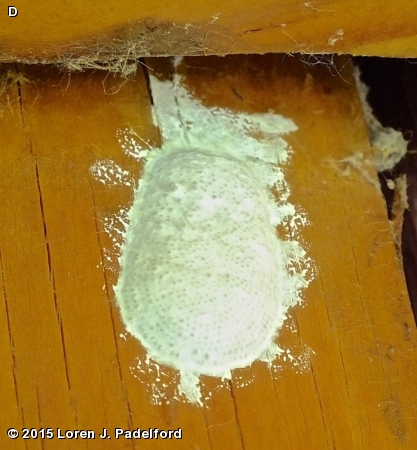
Corydalus comutus
DOBSONFLIES AND FISHFLIES (Corydalidae)
Description
The Eastern Dobsonfly is a huge insect with a wingspan of almost 5 inches. They are brown with black lines and white spots in the wing cells. The huge mandibles of the male are used to grasp the female while mating. The female’s smaller mandibles can apparently inflict a painful bite. The aquatic larvae are brown with stiff bristles along the body. The heads are red.
Occurrence
This is a widespread species in eastern North America. It has been photographed in early July, 2013 at Neale Woods coming to artificial lights and in late June 2015 in the parking lot at the Fontenelle Forest Nature Center. They are not often encountered because they are generally nocturnal.
Comments
The adults do not feed. The female lays up to 1,000 eggs in a mass and covers them with a white, waxy secretion (photo D). When the eggs hatch, the larva drops into the water. The larvae, known as hellgrammites, are aquatic predators that feed on aquatic invertebrates, tadpoles and fish in fast flowing streams and rivers. Two to three years are spent in the larval stage. The larva crawls out of the water to form a pupal cell under a log or rock where it overwinters. Adults emerge the next spring to summer.
Disclaimer: The content of NatureSearch is provided by dedicated volunteer Naturalists of Fontenelle Forest who strive to provide the most accurate information available. Contributors of the images retain their copyrights. The point of contact for this page is: Babs Padelford.



